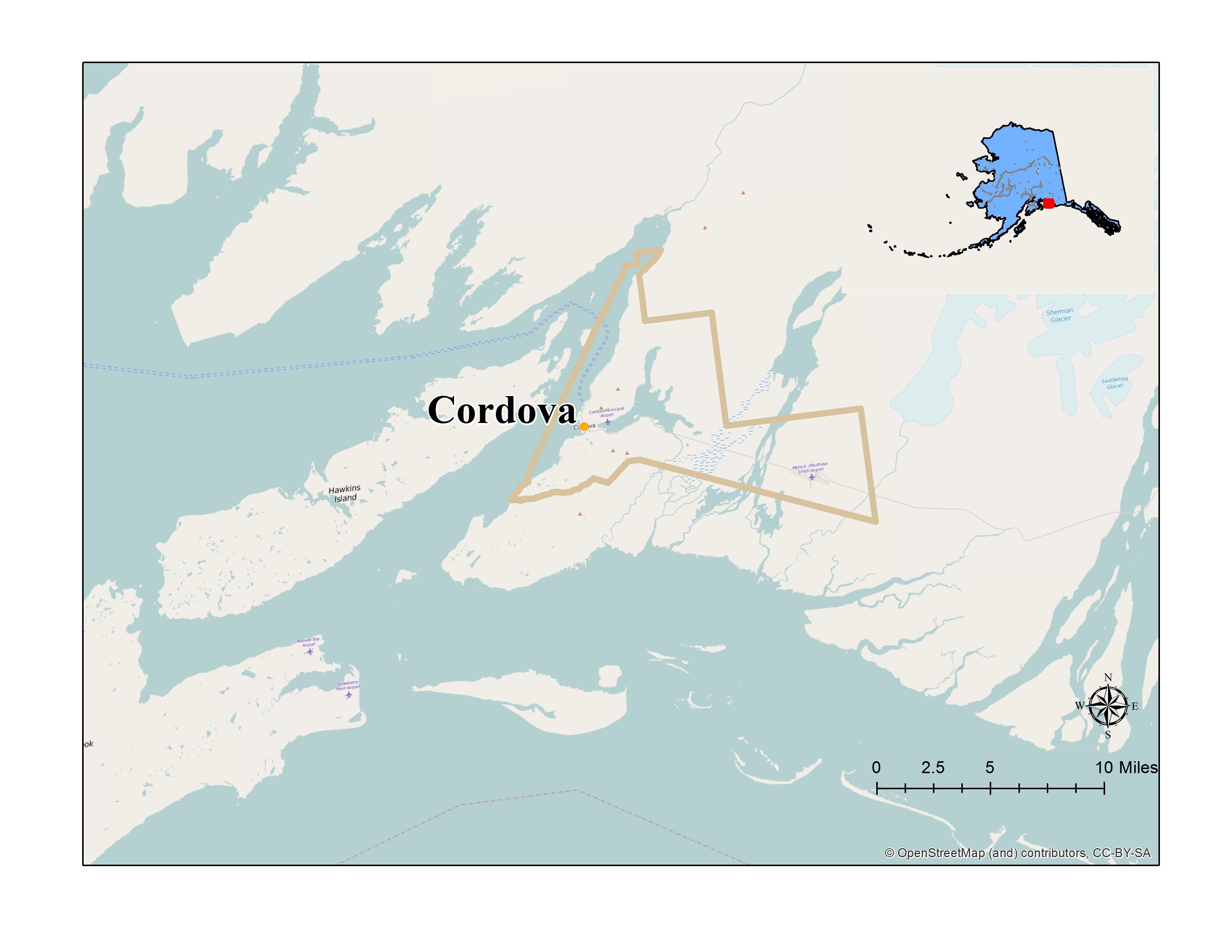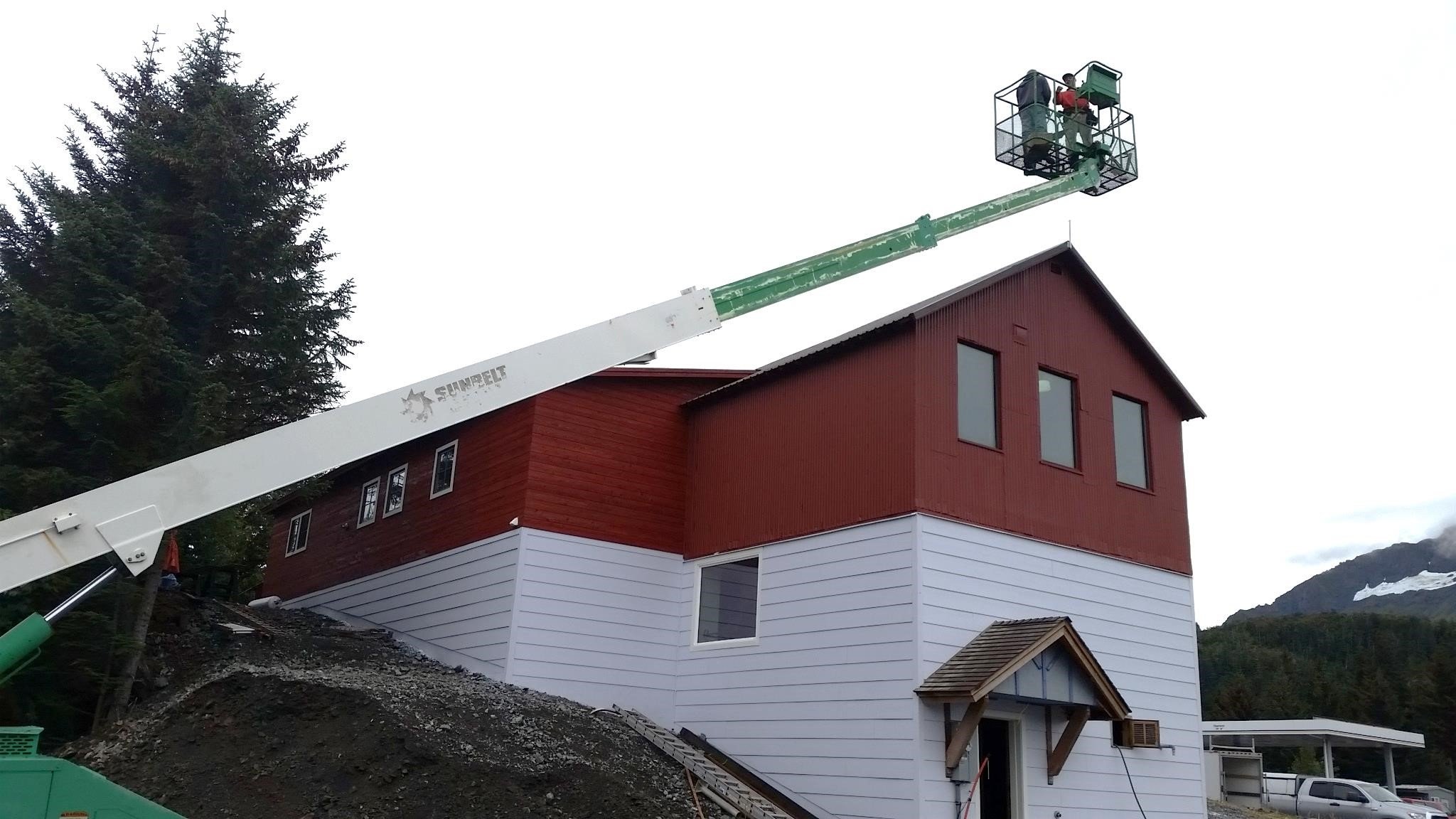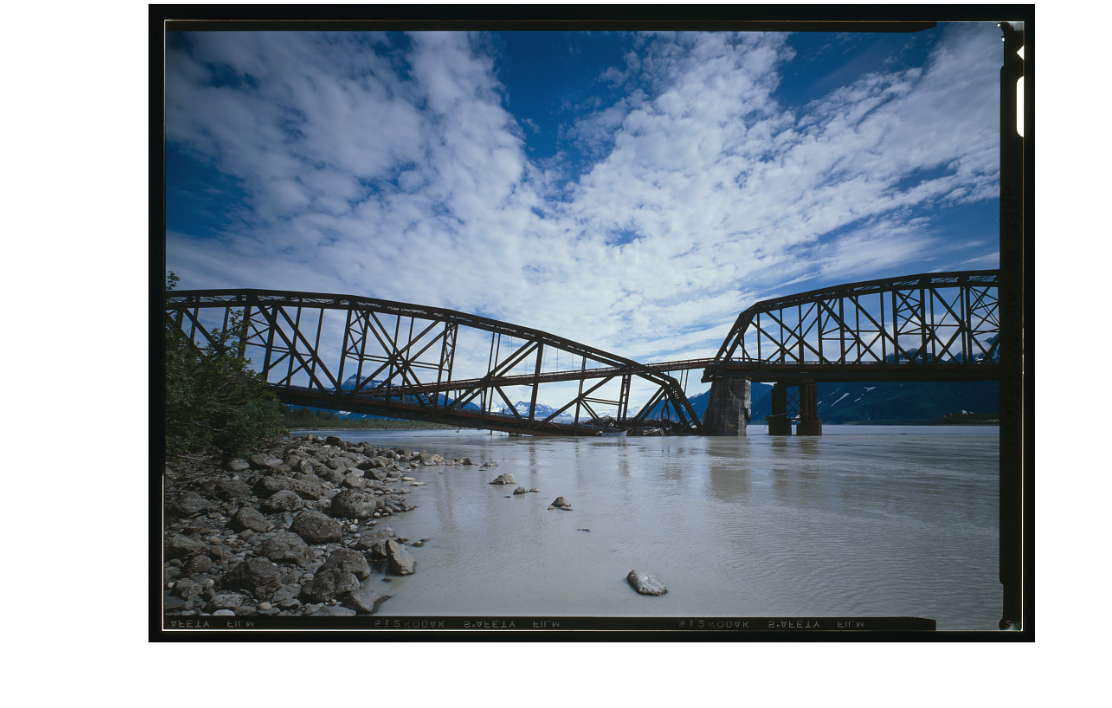City of Cordova
Home Rule City
2022 Population: 2,566
Size: 61.4 Square Miles
Historic Preservation Commission: The City of Cordova and its citizens seek to identify, protect, and preserve the community's historic and cultural resources in order to enhance the quality of life and economic well-being of current and future generations.
Their commission has 7 members (1 Planning & Zoning Commission member, 1 Cordova Historical Society member, 1 Native Village of Eyak member, 1 Cordova resident with demonstrated interest and knowledge of historic preservation, and 3 professionals from the disciplines of history, architecture/architectural history and archaeology). New and/or renewal of appointments is pending by the City Council, expected in April or May 2016.

Date Certified: October 19, 1995
Meets: twice each year, at minimum, per ordinance.
Recent Initiative: Sub-grants for development work on properties (Pioneer Igloo #19, Red Dragon and St. George's Episcopal Church).
Websites: City of Cordova and Cordova Museum
Ordinances: Ordinance 595, Adopted March 4, 1985, establishing the Cordova Historic District and the Cordova Historic Preservation Commission; and, Adopted in 1995, Ordinance 744 and Chapter 18.90 of the City of Cordova Code establish the Cordova Historical District and Historic Preservation Commission
Preservation plan: Completed and adopted by 1999.
Historic property inventory: From Fish and Copper – Cordova's Heritage and Buildings, by Nicki J. Nielsen (1984); update of this inventory was conducted in the late 1990's.
-
CLG Grants

Historic Preservation Development/Predevelopment Grants
Red Dragon Roof and Foundation. 2014.
Pioneer Igloo Hall #19. 2012; 2014.Historic Preservation Education Grants
Historic Walking Tour Map and Guide. 1998.
Red Dragon Historic District: Signage and Website Additions, 2016.
Copper River Highway History Tour Brochure and Online Information, 2016.Commission Training Grants
Section 106 Training. 1999.
-
A Brief History
-
The Eyak people long had a village on the shore of Lake Eyak, located at the north end of today's Cordova. They were the brokers for trade between the Ahtna Athabaskans, Tlingit, and Alutiiq who came to the mouth of the Copper River. The Russians opened a post nearby in the 1790s, hoping to engage in the trade and expecting the post to be the base from which they would access interior Alaska following the Copper River. They were unsuccessful at achieving either aim.
The abundant salmon in the Copper River delta attracted two California companies to open canneries at Odiak Slough in the mid-1880s. The town of Cordova was created when Michael Heney started construction of a railroad paralleling the Copper River to the interior in 1906. Cordova had a deep water port. The railroad went 196-miles to the incredibly rich Kennecott copper mines in the Wrangell Mountains. During the railroad's years of operation, 1911-1938, over $200 million in copper ore shipped from Cordova.
The town was founded during America's Progressive Era, and much of the land around Cordova became part of Chugach National Forest when it was created in 1909. The forest was created, in part, to curtail the practice of consolidating individual mining claims to benefit large corporations and create monopolies. The Ballinger-Pinchot controversy, today a textbook example, was over consolidating claims in the Bering River coal fields outside Cordova.
Cordova was one of the major southcentral Alaska towns in the 1920s and 1930s. It had one of the first movie theaters, a number of fraternal organizations, and a federal building. The town became home base for a number of Alaska aviators who flew supplies that were brought to Cordova by ship to remote mines. After the railroad stopped operating in 1938, fishing became the town's economic base. Cordova was not far from the epicenter of the 1964 earthquake, and suffered major damage. Recovery was slow.
The market change from canned to frozen salmon proved to be a great opportunity for Cordova. Adept promotion of the early run of Copper River red salmon helped Cordova. The rebound was set back with the Exxon Valdez oil spill in 1989, but 25 years later fishing is flourishing. The Eyak and Alutiiq residents in Cordova used oil spill settlement funds to establish the Ilanka Cultural Center, one of the first in the state. Cordova is popular with fishermen, birders, and hunters.
-
-
National Register of Historic Places Listings

Cape Hinchinbrook Light Station
SW end of Hinchinbrook Island
Cape St. Elias Light Station
South end of Kayak Island
Former Cordova Post Office and Courthouse/Current US Forest Service offices
612 Second St.
SE corner of 2nd and B Sts.
Million Dollar Bridge
Mile 48, Copper River Highway
Palugvik Archeological District
Address Restricted
Reception Building
530 Second St.
NE Corner of 2nd and B Sts.
Red Dragon Historic District; includes the Red Dragon Reading Room and St. George's Episcopal Church
100 Lake Avenue
Intersection of 2nd Ave. and Lake Ave.St. Michael the Archangel Church
1002 Lake Avenue
Pioneer Igloo #19
621 First St.
